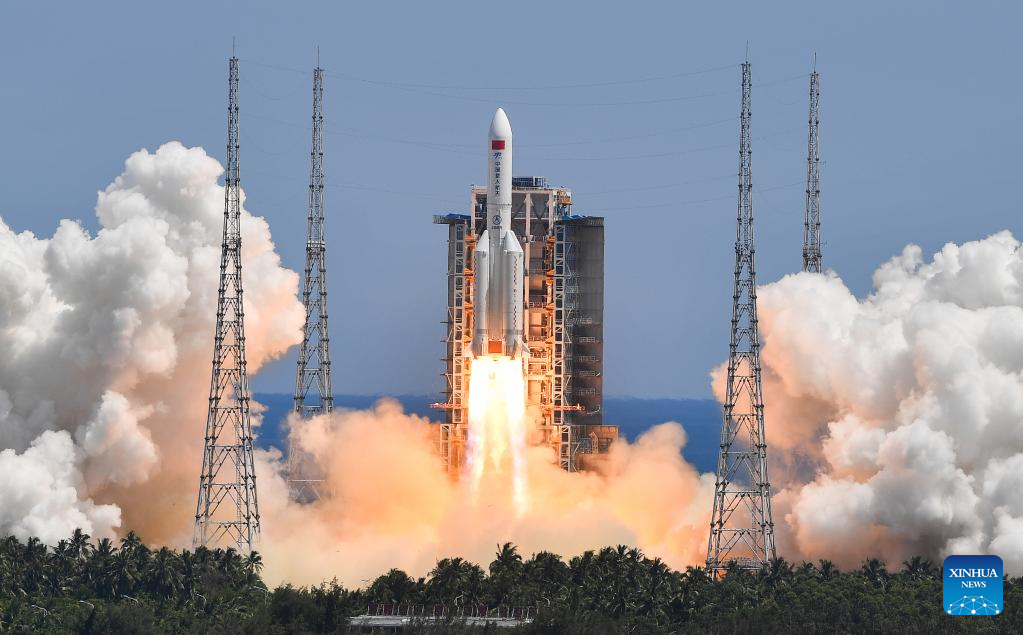China’s new space station is two thirds complete after launch of new lab
After a successful launch on Sunday, the second out of three major parts of China’s Tiangong space station is now in Earth’s orbit.

On Sunday afternoon in the balmy tropical island province of Hainan, a large crowd of spectators and space enthusiasts gathered to watch a massive rocket launch a laboratory into space.
The 23-ton laboratory module, named Wèntiān 问天 (“quest for the heavens”), was successfully launched from the Wenchang space base and is now permanently orbiting the globe as of Monday, according to the China Manned Space Agency (CMSA).
- After 13 hours of flight, it successfully docked at the Tiangong space station early on Monday, with photos of three astronauts waving inside the expanded quarters.
The new lab is the second of the three main modules that will make up China’s Tiāngōng 天宫 (“heavenly palace”) space station, bringing Beijing one step closer to meeting its ambitious goal of having the orbiting outpost fully operational by the end of the year.
- Beijing sent the first module of its space station into orbit in April 2021. The first astronauts to stay on the space station docked in June 2021.
- The third and final module, the Mèngtiān 梦天 science lab, is scheduled to launch in October.
“Foreign astronauts are welcome to Tiangong to make greater contributions to the shared future of mankind,” Chinese Foreign Ministry spokesperson Wāng Wénbīn 汪文斌 said earlier in April, in what appeared to be a pointed comment at the United States:
- Since 2011, China has been excluded from the United States’ International Space Station (ISS) under the Wolf Amendment, after Washington prohibited all researchers from the National Aeronautics and Space Administration (NASA) from working with those affiliated with a Chinese state enterprise or entity.
- Some American scientists have also boycotted NASA conferences due to its rejection of Chinese nationals.
China’s “space dream” has been put into overdrive under Chinese leader Xí Jìnpíng 习近平: The nation’s ambitious space program, which seeks to catch up with those of the United States and Russia, has become a source of national pride that embodies China’s rise from poverty to the world’s second-largest economy in the past 40 years.
- China is only the third country in history to have both sent astronauts into space and built a space station (after the former Soviet Union and the United States). It aims to put its first astronauts on the Moon by 2030 and become a leading space power by 2045.
- The China National Space Administration published a white paper in January outlining its major achievements in this field since 2016 and its main tasks in the next five years in order to “help the international community better understand China’s space industry.”
- The Chinese National Space Administration was set up in 2003 with an initial annual budget of 2 billion yuan ($300 millon).
- Beijing opened its space industry to private companies in 2016. Now investments are pouring in at over 10 billion yuan ($1.5 billion) a year, according to Chinese media per the BBC.
Meanwhile, the completion of the Tiangong space station is set to coincide with the marking of Xi’s decade in power: State media often ties China’s mighty space ambitions with the might of Xi.






